Interview: Nigerian Painter Nengi Omuku On Precolonial Textiles, Floristry & Mental Health
By Something CuratedSkilfully applying oil paint onto sanyan, a traditional Nigerian fabric used for draped clothing, Lagos-based artist Nengi Omuku’s work interrogates ambiguity and liminality with a focus on interior psychological spaces and how they manifest within the material world. In her fascinating works, multiple bodies depict a physical rendering of the layered subconscious. Creating ethereal scenes of spectral figures in constant flux, their faces are deliberately blurred, becoming featureless silent observers whose gaze still seemingly penetrates out towards the viewer. Having trained as a florist and horticulturist under her mother, Omuku takes inspiration from the botanical. In reaction to the past two years of intermittent lockdowns during the pandemic, her latest works seek a reconnection with the natural world. Sitting between the figurative and the abstract, Omuku presents spaces in which the distinction between bodies and nature is often blurred, reflecting on the intricacies around navigating place and belonging. Open now and running until 30 July 2022 at Pippy Houldsworth Gallery, London, Omuku presents a new suite of works in the solo show, Parables of Joy. To learn more about the artist’s practice and her new exhibition, Something Curated spoke with Omuku.
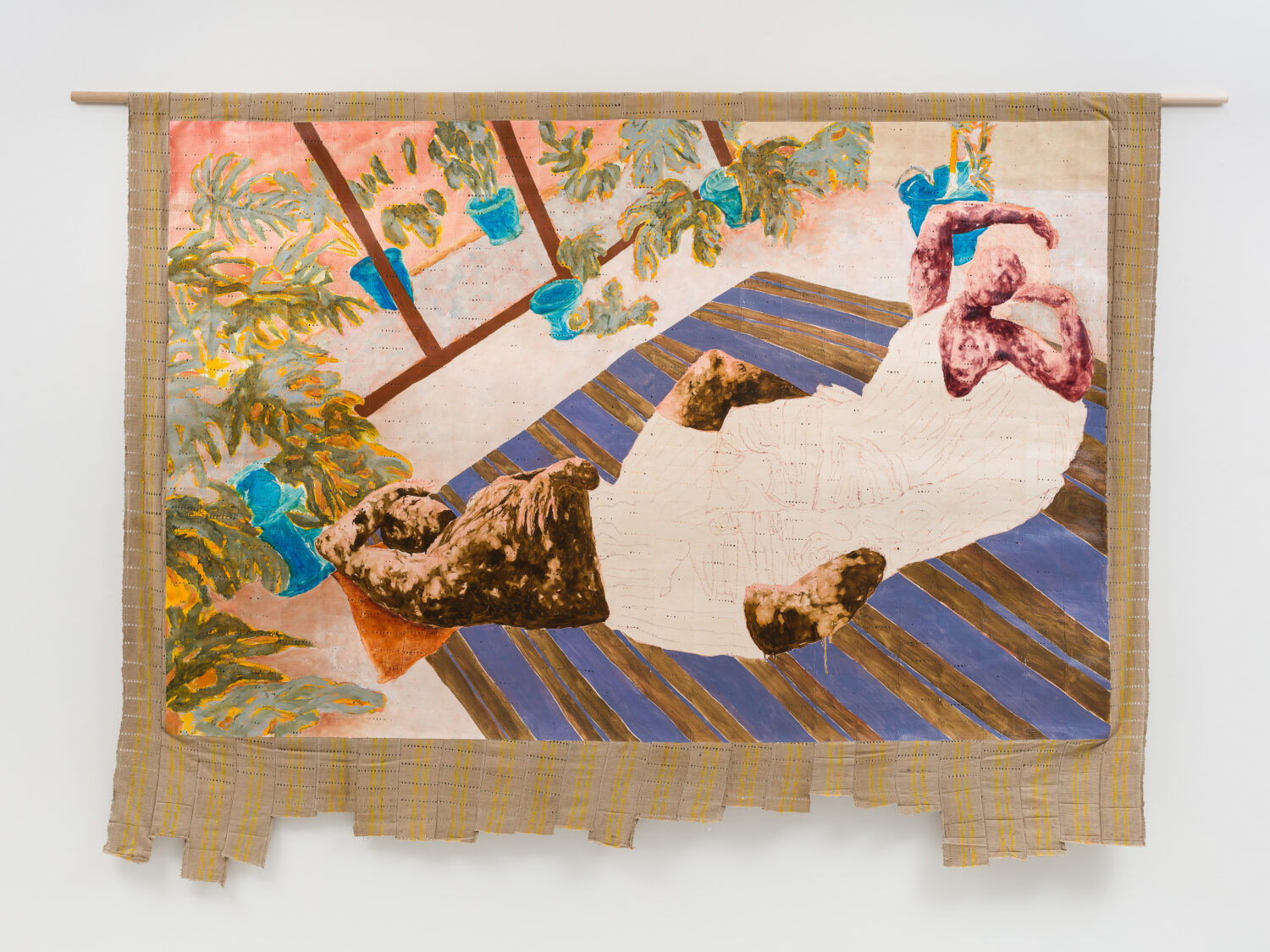
Something Curated: Can you give us some insight into your background and journey to art-making?
Nengi Omuku: I was born in Nigeria and grew up here up until I was about 16. I then moved to England for my A-levels and ended up studying art at the Slade School of Fine Art. The journey was pretty straightforward, I knew I wanted to study art when I was 11 and decided it would be the Slade when I was 13 – thankfully I got in!

SC: How has your experience as a florist and horticulturist influenced your practice?
NO: There were so many lessons learned while studying floristry and horticulture under my mother. It takes a lot to create a successful floral arrangement. For example, you have to think about blocking colours to create a semblance of flow. There’s also the depth of the arrangement, not placing all the flowers on the same level so the eye can travel in and out of it. Finally, constantly stepping back to check the overall composition – these are all things that resonate with how I think about painting today. The years I spent training under my mum felt like a second masters degree to be honest.
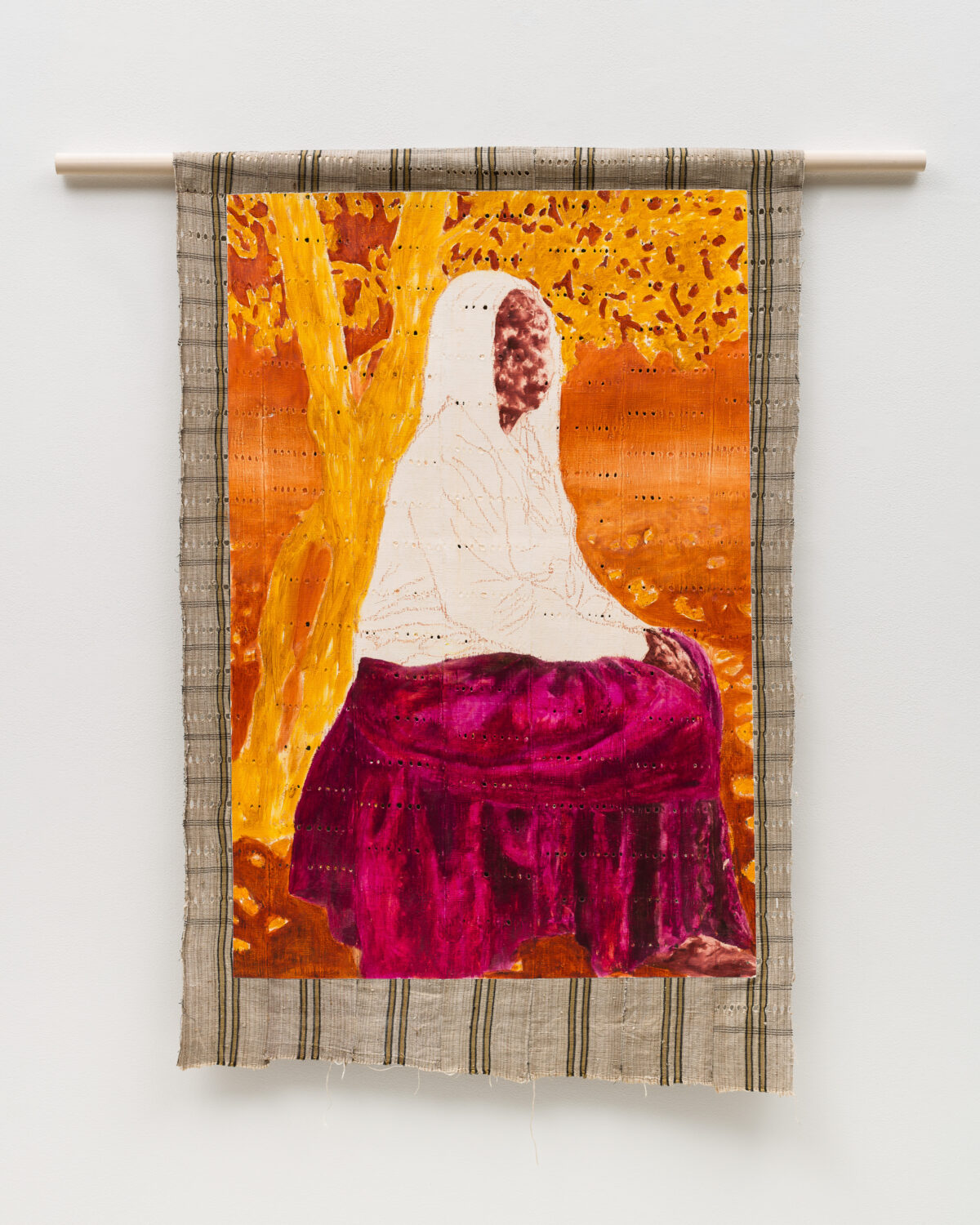
SC: Could you expand on the enigmatic figures you depict in your works — what is the thinking behind their faceless forms?
NO: I began to think about the body in this way when I moved back to Nigeria. My preoccupation while in art school was thinking about my mind and how I processed my emotions. But in Nigeria that expanded a lot, especially when I came into contact with people struggling with their mental health. My preoccupation then became, how do you paint the mind? How does one translate a person’s emotions on a surface, and how can the depiction of the body move beyond representation and focus instead on the state of mind of the sitter or the collective?
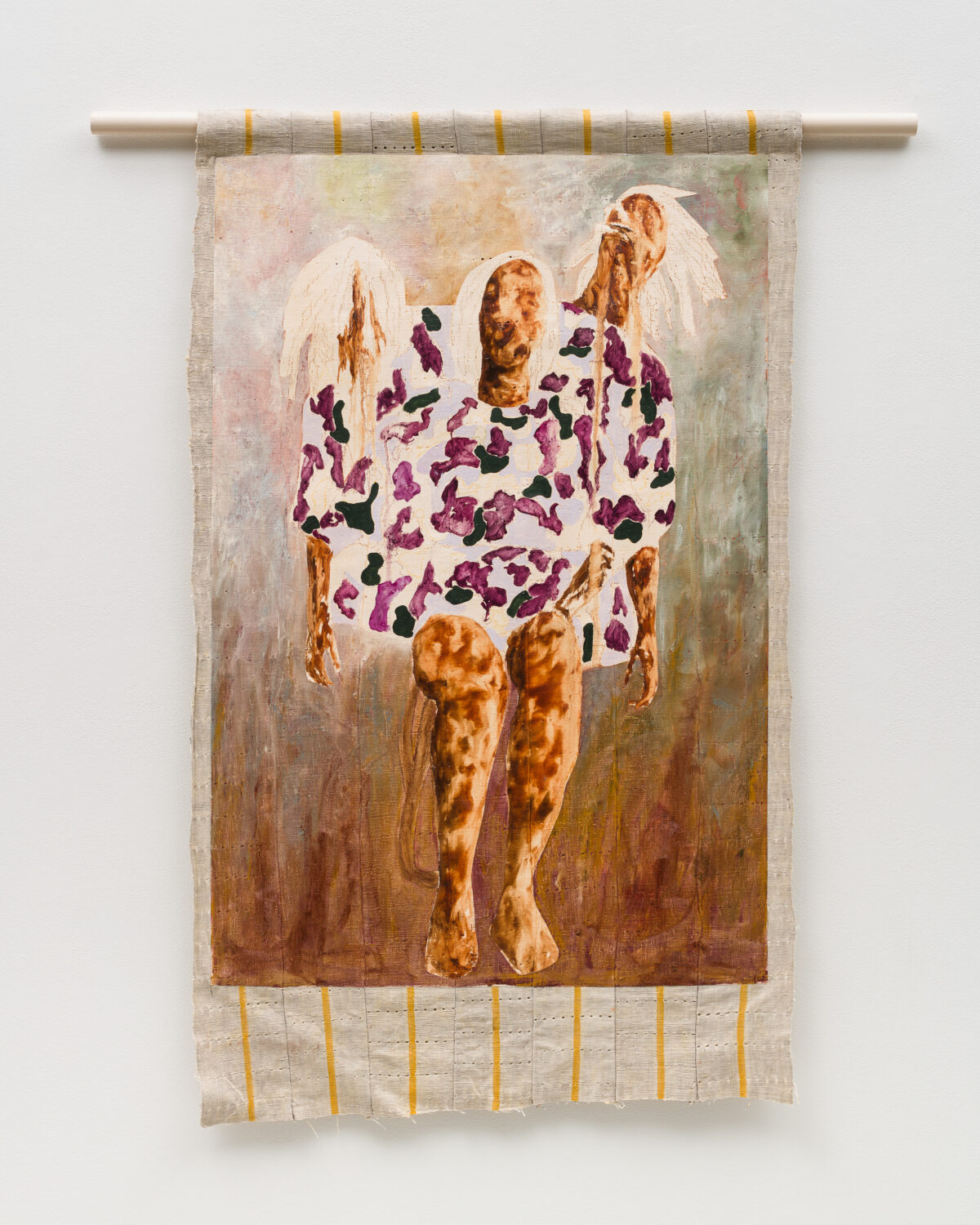
SC: What interests you in utilising sanyan as a surface to paint on?
NO: I remember the first time I was introduced to sanyan, I knew immediately that this should be the surface of the painting and not merely an object to be depicted within the painting. It was a deeply spiritual experience, because I had spent years collecting vintage textiles from different parts of Nigeria, studying their origins and how their use has evolved over time, but sanyan stuck with me because it speaks so loudly about a rich precolonial past in Western Nigeria. It is a vessel of our heritage and an immense source of pride for me as a Nigerian artist, to be able to work collaboratively with this fabric.
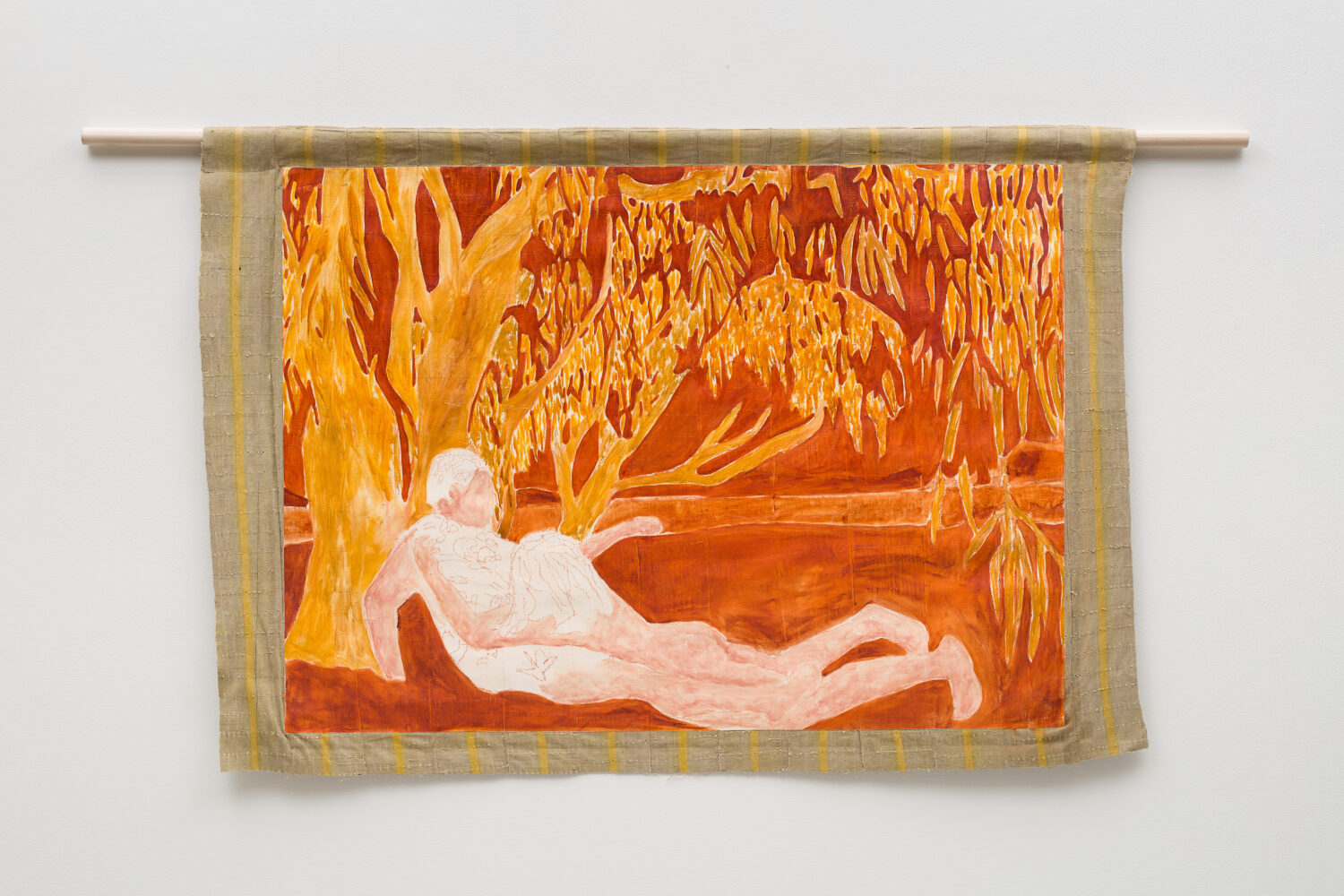
SC: How did you approach selecting the works to include in your new presentation at Pippy Houldsworth Gallery?
NO: Pretty much everything that was made in the period leading up to the show was included in the show. I am not a very prolific painter unfortunately, but every painting is a snippet from an experience, so the body of work in this show tells a fractured story, filled with metaphors and allusions to ways of finding joy.
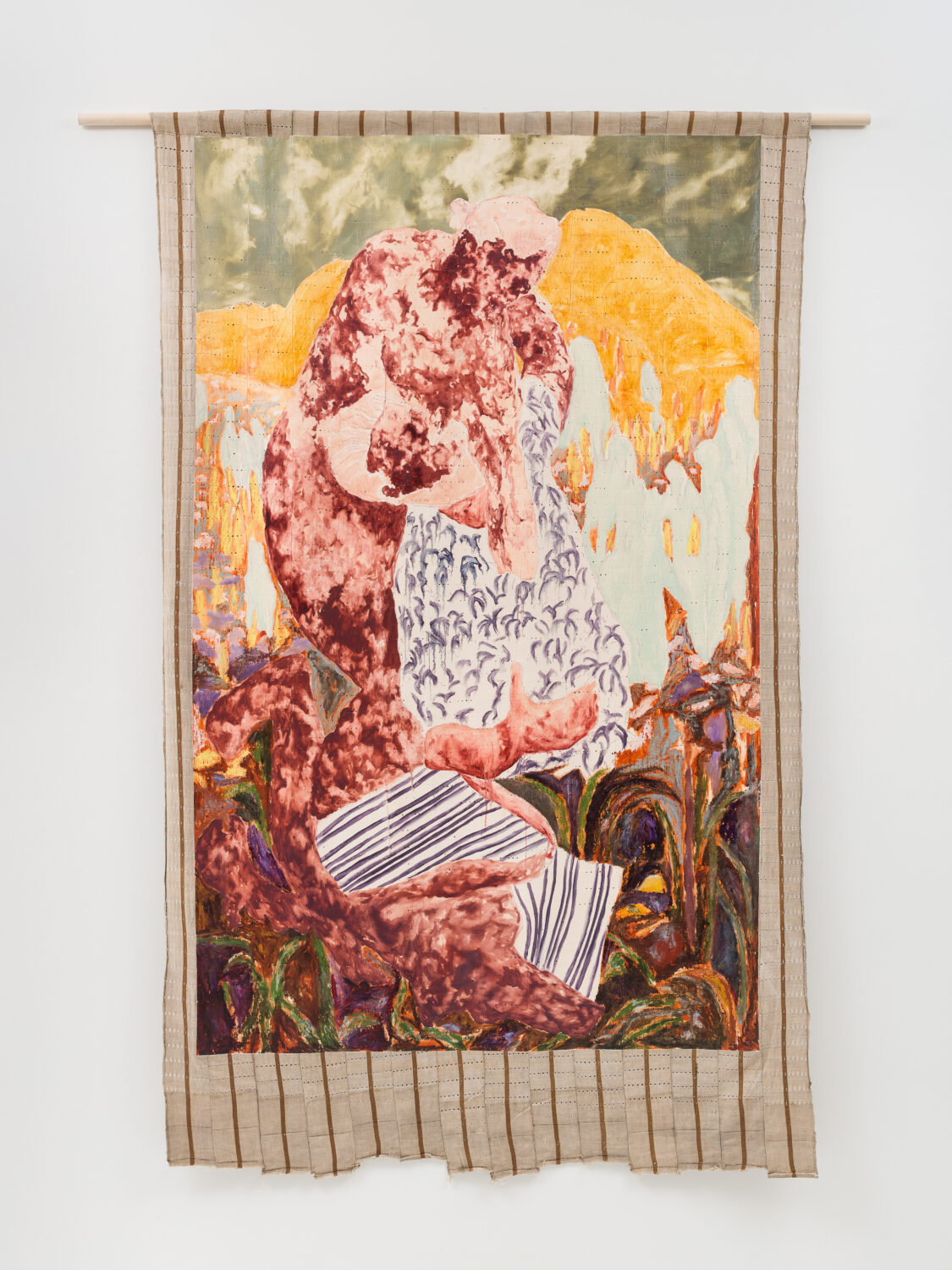
SC: What are some of your favourite cultural spaces in Lagos?
NO: I love the new space Tiwani that has just opened in Lagos. It really is so well thought out and built and I think the art community is grateful for its presence. The new Rele Gallery is also a really exciting space run by a powerhouse of a woman. Finally the Yemisi Shyllon Museum is an architectural feat housing an incredible collection of art that spans centuries.
Nengi Omuku’s Parables of Joy is now open and runs until 30 July 2022 at Pippy Houldsworth Gallery, London.
Feature image: Nengi Omuku, Repose, 2022. Courtesy the artist and Pippy Houldsworth Gallery. © Nengi Omuku. Photo: Mark Blower